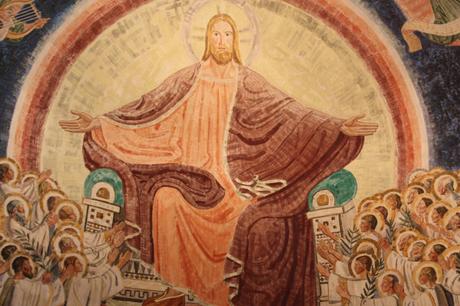Grace Thoughts
Crowns and Thrones: The Majesty of Our God (Part One)

Crowns and thrones have fascinated people for thousands of years. We find lists of some of the first kings from ancient archeology that date back to the early part of the third millennium. Some scholars believe the Sumerian King list may include kings who lived before the great deluge (flood). Reliable pre-flood records are not available because of the devastation the flood waters caused, but some of the ‘kingdoms’ mentioned in the Sumerian King list include Eridu, Kish, Umma, Uruk, Ur, and Awan. The earliest kingdoms that can be confirmed independently from archaeological evidence date to the early part of the 26th century BC.
Kingdoms
The first mention of the word ‘kingdom’ in the Bible is found in Genesis 10:10:
And the beginning of his kingdom was Babel, Erech, Accad, and Calneh, in the land of Shinar.
The person referred to as having this massive ‘kingdom’ is Nimrod, son of Cush, son of Ham, son of Noah. The Bible lists Nimrod’s ‘kingdoms’ as Babel, Erech, Accad, and Calneh in the land of ‘Shinar’ and Nineveh, Rehoboth Ir, Calah, Resen in the land of ‘Assyria.’ Those ancient cities covered much of what we know to have been ancient Mesopotamia – often referred to as the ‘Cradle of Civilization’ and ‘Fertile Crescent.’
Mesopotamia means ‘between two rivers’ and was the land mass lying between the Euphrates and Tigris rivers. The earliest cities were located in that area with Erech, Ur Eridu to the south and Nineveh and Calah (also known as Nimrud) to the north.
Nimrod established himself as a great hunter and leader of people as a young man. The way in which he is described in Genesis 10 makes him a strong contender for the person who led a revolt against God’s command that we read in Genesis 11:
Now the whole earth had one language and one speech. And it came to pass, as they journeyed from the east, that they found a plain in the land of Shinar, and they dwelt there. Then they said to one another, ‘Come, let us make bricks and bake them thoroughly.’ They had brick for stone, and they had asphalt for mortar. And they said, ‘Come, let us build ourselves a city, and a tower whose top is in the heavens; let us make a name for ourselves, lest we be scattered abroad over the face of the whole earth.
Genesis 11:1-4
This action was in direct disobedience to what God had told Noah, Nimrod’s great-grandfather:
Bring out with you every living thing of all flesh that is with you: birds and cattle and every creeping thing that creeps on the earth, so that they may abound on the earth, and be fruitful and multiply on the earth.
Genesis 8:17
Release all the animals—the birds, the livestock, and the small animals that scurry along the ground—so they can be fruitful and multiply throughout the earth.
NLT
Bring out all the living creatures that are with you—birds, livestock, those that crawl on the earth—and they will spread over the earth and be fruitful and multiply on the earth.
CSB
God stopped Nimrod and the people from building a city and a tower “whose top is in the heavens.” God confused their language (from one language to many) and “scattered them abroad over the face of all the earth” (Genesis 11:9).
That did not deter Nimrod’s plan to rule the world. He built many city-states over which he ruled for many years. I say ‘many’ years because of the sheer time it would have taken Nimrod to build cities in the massive area of ancient Mesopotamia.
Crowns and Thrones
Crowns and thrones became images of power in the ancient world. We don’t know if Nimrod wore a crown and sat on a throne, but archaeological findings from the third millennium suggest he may have done that. Many of the carvings of those kings show them wearing a special head covering that surrounded their head and some are sitting on thrones (elevated seats).
The word ‘throne’ meant a ‘raised seat, seat of honor, official seat.’ It. demonstrated a position of power and control. The word ‘crown’ meant ‘to surround, diadem, head wreath.’ It also demonstrated power and reward.
Ancient kings of Mesopotamia were known to be warrior kings. That follows what the Bible states about Nimrod. He is called both ‘mighty on on the earth’ and ‘Nimrod the mighty hunger’ (Genesis 10:8-9). Warrior kings established kingdoms (city-states) and often ruled with a heavy hand. They were often rewarded for their victories with great wealth, some of which was buried with them.
High and Lifted Up
Ancient people understood that ‘heaven’ was above them. Archaeological findings demonstrate people’s belief that ‘gods’ and ‘goddesses’ lived high above them. These deities were literally ‘high and lifted up.’
We see that demonstrated in Genesis 11:4 where the people of earth said, “Come, let us build ourselves a city, and a tower whose top is in the heavens.” Why would the top of their tower need to be ‘in the heavens’?
Many archaeologists believe that the ‘tower’ referred to in Genesis 11 was the first of many rectangular stepped towers that often had a ‘temple’ at the top. They were known as ‘ziggurats’ and were built with sun-baked bricks at the core and fired bricks on the outside. Genesis 11:3 states that the people said, “Come, let us make bricks and bake them thoroughly.” It goes on to say that they “had brick for stone, and they had asphalt for mortar.” That’s quite specific and has been documented through archeology as materials for building large structures.
Foundation cylinders belonging to the ancient Babylonian King Nabopolassar state that the ‘god’ Marduk told him to rebuild the ancient ziggurat which had been greatly weakened by his time (8th century BC). The text includes these word – “to make its top vie with the heavens.” The name of the tower (ziggurat) was Etemenanki (‘House of the platform of Heaven and Earth’).
The Babylonians believed that Marduk actually slept at night on a couch in the temple on Etemenanki’s summit, accompanied by a human priestess whom it was believed he had taken in sacred marriage.
Historical Atlas of Ancient Civilizations, Penguin Books, 2005, p 30
Those ziggurats with their temples at the top were dedicated to the ‘gods’ of the people of Mesopotamia. Ancient Sumerians believed their gods lived in the heavens above and that towers with temples dedicated to those gods were important to both worship and hear the gods better.
We know from Genesis 11 that the primary purpose of Nimrod and fellow citizens of the early world was to ‘make a name’ for themselves, lest they be “scattered abroad over the face of the whole earth.” We don’t know whether they believed they were attempting to influence the true God of Heaven or a ‘god’ or ‘gods’ they had devised by that time, but we do know that the true God was not pleased and put an end to their universal attempt by confusing their language so they could not understand each other.
So, what’s up with ‘up’? Why would ancient people want to build towers upward toward the ‘heavens’? That idea probably came from Noah, who would have still been alive when people were building the Tower of Babel. Noah knew from his many conversations with God that God was high above the earth. Noah would probably have known that God had taken his great-grandfather Enoch from earth to Heaven without dying (Genesis 5:24; Hebrews 11:5). Nimrod, the great-grandson of Noah, may have found the story about his ancestor Enoch insightful to the importance of reaching up to Heaven.
History of Crowns and Thrones
Out of more than 190 countries in our world today, only a little more than 40 of them have kings or queens ruling over them (a total of 26 monarchies). Most of the monarchies are constitutional, though there are still three that are absolute and one that is parliamentary. Queen Elizabeth II of the United Kingdom is also the sovereign of 15 countries in the Commonwealth of Nations, which explains why 26 monarchies rule more than 40 countries.
We hear more about presidents and prime ministers than kings and queens today. However, for most of the world’s history, that was not the case. The history of the world demonstrates the power and control of monarchs for thousands of years. They were the men and women who wore crowns and sat on thrones while wielding almost absolute power until they died or were overthrown.
Next Time
In the next part of our new study about Crowns and Thrones: The Majesty of Our God, we’ll look at the importance of both in the Bible and how they point to King Jesus and His great sacrifice for us.
Scripture taken from the New King James Version®. Copyright © 1982 by Thomas Nelson. Used by permission. All rights reserved.
GraceLife © 1990-2021
 Bible StudyCrowns and ThronesGodGod's MajestyJesus Christ
Bible StudyCrowns and ThronesGodGod's MajestyJesus Christ

Published by gracelifethoughts
Founder & Director of GraceLife Ministries View all posts by gracelifethoughts
